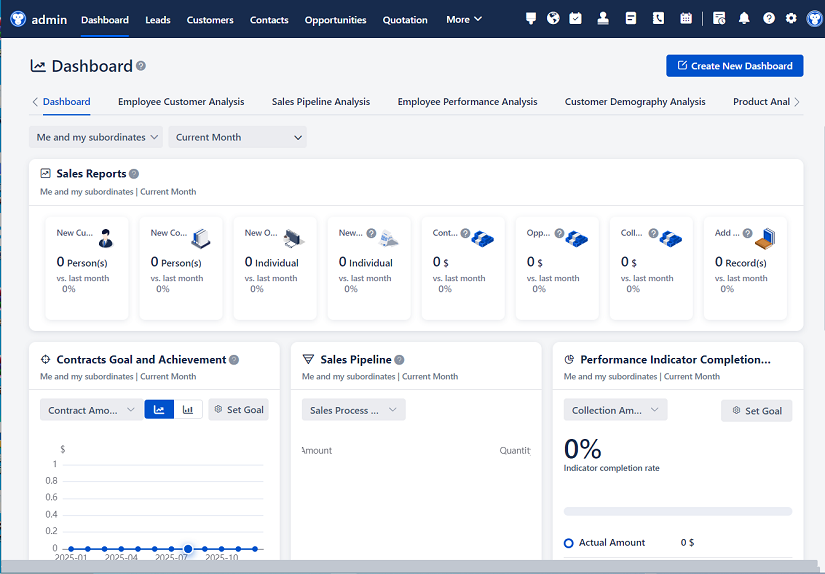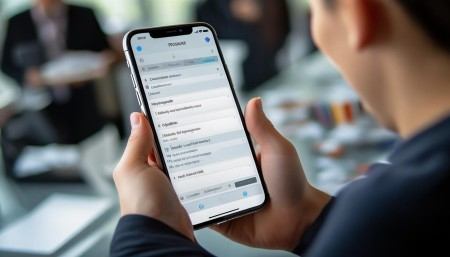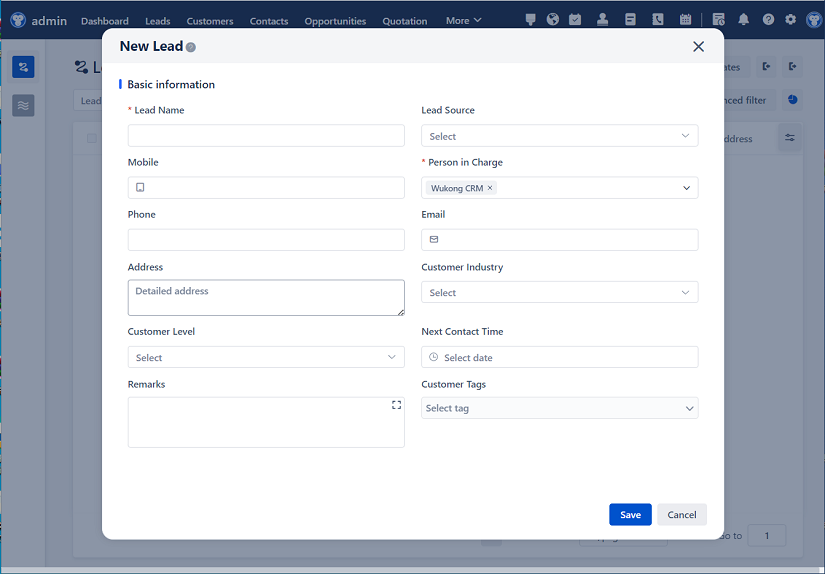
△Click on the top right corner to try Wukong CRM for free
You know, I’ve been thinking a lot lately about how businesses communicate with their customers. It’s not just about sending emails or making calls anymore. It’s about building real relationships—relationships that feel personal, timely, and meaningful. And honestly, that’s where CRM software comes in. But here’s the thing: most CRMs are clunky, complicated, and honestly, kind of a pain to use every day.
I remember when I first started using a traditional CRM system. It was supposed to make my life easier, right? Instead, I found myself spending more time entering data than actually talking to clients. I’d have to switch between five different apps—email, calendar, messaging, notes—and by the time I got back to the CRM, I’d already forgotten half of what the customer said. Sound familiar?
Then someone showed me this new CRM platform built on Enterprise WeChat. At first, I was skeptical. I mean, isn’t WeChat just for chatting with friends and ordering food? But then I realized—wait, no. Enterprise WeChat is way more powerful than that. It’s like the business version of WeChat, designed specifically for companies in China and beyond. And when you build a CRM directly into it? That changes everything.
Let me explain why. Think about how your team communicates every day. Chances are, they’re already using Enterprise WeChat. They’re checking messages, joining group chats, sharing files, scheduling meetings—all inside one app. So instead of forcing them to log into a separate CRM system, why not bring the CRM to where they already are?
That’s exactly what this platform does. It integrates seamlessly into Enterprise WeChat, so your sales reps don’t have to jump between tools. When a lead comes in, it shows up right in their chat feed. They can view the customer’s history, update notes, assign follow-ups—all without leaving the app. It feels natural, almost like texting a friend, but it’s actually driving real business results.
And here’s something else I love: the automation. I used to dread manual data entry. Who has time to type out every little detail after a call? But with this CRM, a lot of that happens automatically. For example, if a customer sends a message through WeChat, the system can capture it, tag it, and even suggest next steps based on past behavior. It’s like having a smart assistant watching your back.
But it’s not just about saving time. It’s about being more human. Because when your team isn’t buried in admin work, they actually have space to listen, to empathize, to build trust. And that’s what wins deals—not just data points.

I’ll give you a real example. One of our salespeople was working with a potential client who kept going silent after each meeting. Normally, we might have labeled them as “cold” and moved on. But because the CRM tracked every interaction—including the tone of messages and response times—we noticed a pattern. The client wasn’t disinterested; they were overwhelmed. So instead of pushing for a sale, our rep sent a simple voice note saying, “Hey, no pressure. Just wanted to check in and see if you need help sorting through things.” That small gesture changed everything. The client opened up, shared their concerns, and eventually signed the contract.
That wouldn’t have happened with a traditional CRM. Why? Because traditional systems only show you what was entered—not the emotional context, not the unspoken cues. But this platform, thanks to its deep integration with Enterprise WeChat, captures more of the full picture.
Another thing I’ve noticed is how much better collaboration has become. Before, if I wanted input from marketing or support, I had to forward emails, tag people in Slack, or schedule a meeting. Now? I just mention the relevant team member in the customer’s profile within Enterprise WeChat. They get notified instantly, can add comments, attach documents, and even start a voice call—all in the same thread. It’s like the whole team is sitting around the same table, even if they’re in different cities.
And let’s talk about data security for a second. I know some people worry about using a Chinese platform, especially when handling sensitive customer information. But Enterprise WeChat is serious about compliance. It meets international standards like ISO 27001 and GDPR, and all data is encrypted both in transit and at rest. Plus, admins have full control over permissions—who can see what, who can edit records, etc. So you’re not sacrificing security for convenience.
One of the coolest features, though, is the built-in analytics. I don’t mean boring dashboards with charts nobody reads. I’m talking about actionable insights delivered in plain language. Like, “Your response time to high-value leads dropped by 40% last week—consider assigning a dedicated rep.” Or, “Customer X hasn’t engaged in 14 days. Send a personalized offer?” It’s like the system is coaching you in real time.
And because everything lives inside Enterprise WeChat, adoption is way higher. You don’t have to train people on a new interface. They already know how to use WeChat. They just learn a few new buttons—like how to log a call or update a deal stage. Even our older team members picked it up in a day.
I should also mention scalability. We started with just five users, but now we’ve got over 200 across multiple departments—sales, customer service, marketing, even HR. The platform grows with you. Whether you’re a startup or a multinational, it adapts. You can create custom workflows, set up approval chains, automate routine tasks—it’s incredibly flexible.
Oh, and mobile access! This one matters a lot. Our field reps are always on the go. With this CRM, they can update records from their phone while standing in a client’s office. No laptop needed. They can even scan a business card with their camera, and the system auto-fills the contact info. It’s small things like that which make a huge difference in daily use.

Now, I’m not saying it’s perfect. No tool is. There are times when I wish certain integrations were smoother—like pulling data from our legacy billing system. But the developers are constantly updating it. They release new features every few weeks based on user feedback. It feels like they’re listening, which is rare.
Another benefit? Cost. Traditional CRMs can cost thousands per month, especially when you add on modules and user licenses. This platform is way more affordable, especially for teams already using Enterprise WeChat. You’re not paying for redundant features. You’re getting a lean, focused tool that does exactly what you need.
And let’s be honest—culture matters. In China, WeChat isn’t just an app. It’s a lifestyle. People live in it. They expect businesses to meet them there. So when you use a CRM that speaks their language—literally and figuratively—you build instant credibility. Customers feel understood. They don’t want to download another app or remember a new login. They want to chat the way they always do.
I’ve seen this firsthand. One of our clients refused to engage through email. Said it felt too formal, too distant. But when we switched to communicating via Enterprise WeChat—using quick messages, voice notes, even emojis—their responsiveness skyrocketed. They even started sharing ideas and feedback proactively. That kind of engagement? That’s gold.
Of course, success doesn’t come from the tool alone. You still need good people, clear processes, and a customer-first mindset. But this CRM makes it easier to execute that strategy consistently. It removes friction. It turns best practices into habits.

Looking back, I realize how much time we wasted before adopting this platform. All those hours lost to context switching, duplicate entries, missed follow-ups. Now, our team moves faster, closes more deals, and actually enjoys using the CRM. Can you believe that? A CRM people like using?

If you’re considering a CRM solution—especially if you work with Chinese markets or distributed teams—I’d strongly recommend looking into platforms built on Enterprise WeChat. It’s not just another piece of software. It’s a shift in how you think about customer relationships. It’s about meeting people where they are, speaking their language, and making every interaction count.
And hey, if you’re worried about change management, start small. Pilot it with one team. Let them test it, give feedback, tweak the setup. Once they see the benefits, others will follow. Trust me.
At the end of the day, technology should serve people—not the other way around. And this CRM? It finally feels like it gets that.
FAQs (Frequently Asked Questions)
Q: Is Enterprise WeChat available outside of China?
A: Yes, absolutely. While it’s most popular in China, Enterprise WeChat is accessible globally. Many international companies with operations in Asia use it to connect with local teams and customers.
Q: Can this CRM integrate with other tools like email or Google Calendar?
A: Definitely. Most CRM platforms on Enterprise WeChat support integrations with common business tools. You can sync calendars, pull in Gmail data, and even connect to cloud storage like Google Drive or Dropbox.
Q: Do I need technical skills to set it up?
A: Not really. The setup is designed to be user-friendly. If you can navigate WeChat, you can configure the basics. For advanced workflows, you might want IT support, but many companies manage it internally.
Q: How does it handle customer privacy?
A: Enterprise WeChat takes privacy seriously. Data is stored securely, access is role-based, and companies maintain full ownership of their information. You control who sees what.
Q: Can I customize the CRM for my industry?
A: Yes. Whether you’re in retail, education, manufacturing, or services, you can tailor fields, pipelines, and automation rules to fit your specific needs.
Q: What if my team doesn’t speak Chinese?
A: No problem. Enterprise WeChat has an English interface, and most CRM add-ons support multiple languages. Your team can use it comfortably in English.
Q: Is there a free trial?
A: Many vendors offer free trials or starter plans. It’s worth testing it with a small group before rolling it out company-wide.
Q: How does it compare to Western CRMs like Salesforce or HubSpot?
A: It’s less about “better” and more about “different.” Western CRMs are powerful but often complex. This solution excels in speed, usability, and cultural fit—especially in Chinese-speaking markets. Think of it as a more conversational, mobile-first alternative.
Related links:
Free trial of CRM
Understand CRM software
AI CRM Systems

△Click on the top right corner to try Wukong CRM for free